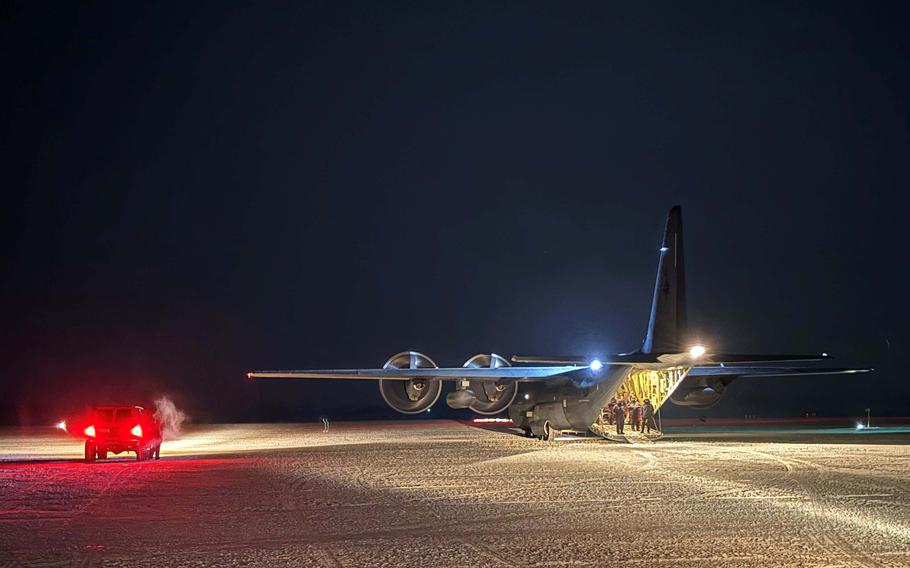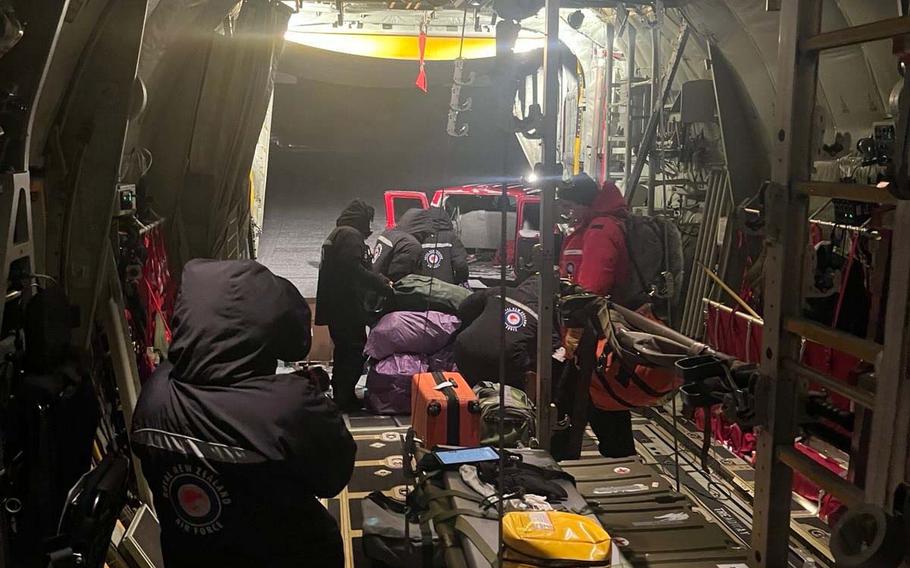
The crew of a New Zealand air force C-130J Super Hercules flew a high-risk, midwinter medical mission to evacuate three people from McMurdo Station, Antarctica, on Aug. 5-6, 2025. (Al Denovan)
A New Zealand air force C-130J Super Hercules crew completed a high-risk midwinter medical evacuation from McMurdo Station in Antarctica, U.S. and New Zealand officials said Wednesday.
The mission was requested by the U.S. National Science Foundation, which manages the research hub for American scientists on the frozen continent, the New Zealand Defence Force said in a news release.
One patient required urgent medical treatment, while two others needed medical attention, according to the release. Medical personnel, including a doctor, were aboard the aircraft to care for the patients during the flight back to Christchurch, New Zealand.
“This mission wasn’t just difficult; it was one of the most technically demanding operations an aircrew can face,” Melissa Sweeney, the U.S. chargé d’affaires in Wellington, said in a news release on the U.S. Embassy to New Zealand’s website. “In extreme conditions, with little margin for error, the [New Zealand air force] executed this mid-winter Antarctic medevac flawlessly.”
McMurdo Station typically houses up to 1,100 people during the summer but has fewer than 200 in winter, according to the National Science Foundation. In early August, the base, where temperatures can fall as low as minus-58 degrees Fahrenheit, is plunged into 24-hour darkness.
Sweeney described the operation as one that brought hope in the middle of the Antarctic night.

One person requiring urgent medical care and two others needing medical attention were medevaced from MucMurdo Station, Antarctica, to Christchurch, New Zealand, Aug. 6, 2025. (New Zealand Defence Force)
“We are so very grateful. Our Kiwi partners didn’t hesitate to undertake this mission in one of the most unforgiving environments on Earth,” she said in the release. “Their skill and readiness are truly world-class.”
The aircrew wore night-vision goggles to land in darkness, on ice in frigid temperatures, Sweeney said.
“This required absolute precision,” she said. “It was daring, dangerous, and deeply courageous. This is the kind of mission that tests every ounce of skill and bravery. [The New Zealand air force] delivered, just as they always do.”
New Zealand and the United States maintain a close partnership in Antarctica, New Zealand Foreign Minister Winston Peters posted Wednesday on X.
“We were pleased to be able to respond rapidly to a US request for New Zealand to medically evacuate US staff on the ice in need of treatment and attention,” he wrote. “Medical evacuations from the ice are complicated and risky. We pay tribute to all those New Zealand Government personnel involved in pulling this off successfully for their professionalism and heroism.”
Before the aircraft could land, a U.S. team on the ground prepared a runway by grooming the ice surface and ensuring conditions were suitable for landing, said Air Commodore Andy Scott, New Zealand’s air component commander.
“Although they determine it is safe, it’s still an extremely challenging environment to fly in on Night Vision Goggles due to the extreme weather conditions, which are highly changeable at this time of year and makes accurate forecasting a challenge,” he said in the Defence Force release. “This, coupled with there being no airfields available to divert to once the aircraft is past a certain point south adds to the risk, so these missions are not taken lightly.”
The Super Hercules landed in Christchurch on Wednesday morning after the nearly 20-hour mission, Scott said. The patients are receiving medical treatment there.
“We wish the Americans evacuated all the best for a speedy recovery,” Peters wrote on X.